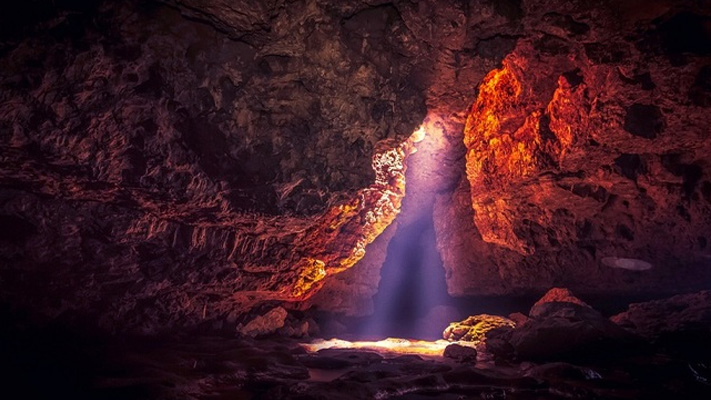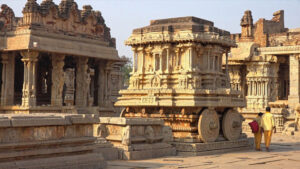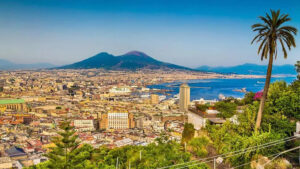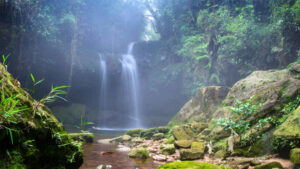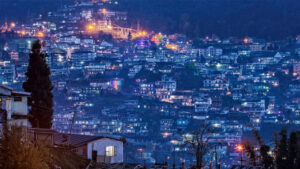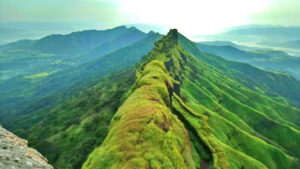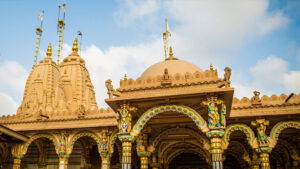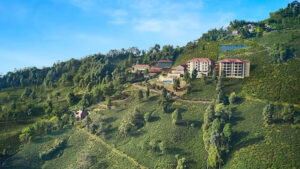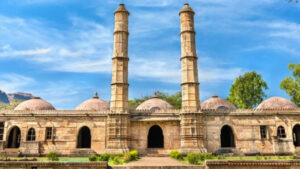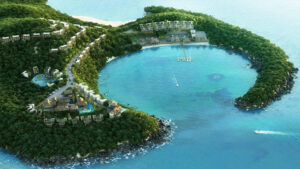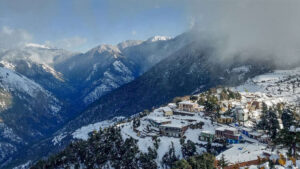7 CAPTIVATING CAVES OF MEGHALAYA – UNVEIL NATURE’S SUBTERRANEAN MASTERPIECES

Meghalaya, a north-eastern state in India, is also known as the “Abode of Clouds,” and is famous for its extensive cave systems. With its unique geography, high rainfall, and limestone-rich terrain, Meghalaya is a paradise for cave enthusiasts and explorers. The state is home to numerous caves, each with its own distinct characteristics, ranging from vast underground chambers to intricate rock formations. Meghalaya’s caves offer a glimpse into the ancient geological history of the region, while also providing a mesmerizing experience for adventure seekers. From the famous Mawsmai and Krem Liat Prah caves to lesser-known gems like Siju Cave and Krem Mawmluh, Meghalaya’s caves showcase the beauty and wonders hidden beneath the surface, making it a must-visit destination for those seeking to unravel the mysteries of the underground world.

Here are 7 caves in Meghalaya that never fail to captivate and mesmerize:
1. Mawsmai Cave
Mawsmai Cave, located near Cherrapunjee in Meghalaya, India, is one of the most popular and easily accessible caves in the region. Here’s what you need to know about Mawsmai Cave:
- Formation and Features: Mawsmai Cave is a limestone cave formed over millions of years through the process of erosion and geological activity. It features impressive stalactites and stalagmites formations that have been shaped by water dripping from the cave ceiling.
- Accessibility: Mawsmai Cave is conveniently located and easily accessible, making it a popular tourist attraction. It is situated just a short distance from the main road, and a paved pathway leads visitors to the entrance of the cave.
- Length and Exploration: The cave stretches for approximately 150 meters, allowing visitors to explore a significant portion of its interior. The well-lit pathway makes it easier to navigate through the cave and observe its intriguing rock formations.
- Unique Atmosphere: As you venture deeper into Mawsmai Cave, you’ll experience a unique atmosphere characterized by a cool temperature and the faint sound of water droplets echoing through the chambers. The ethereal ambiance adds to the adventure and allure of the cave exploration.
- Stalactites and Stalagmites: The cave is adorned with numerous stalactites hanging from the ceiling and stalagmites rising from the cave floor. These formations come in various shapes and sizes, creating a captivating sight for visitors.
- Caving Experience: Exploring Mawsmai Cave offers a thrilling caving experience for visitors of all ages. The cave’s interior is well-illuminated, allowing you to appreciate the intricate details of the rock formations and capture memorable photographs.
- Local Legends: Mawsmai Cave is also associated with local legends and folklore. According to one popular belief, the cave was once inhabited by spirits, and it is said to have served as a hiding place for the Khasi people during ancient times.
2. Krem Mawmluh
Krem Mawmluh is one of the prominent caves in Meghalaya, India, located near the town of Cherrapunjee (also known as Sohra). Here’s what you should know about Krem Mawmluh:
- Length and Exploration: Krem Mawmluh is one of the longest caves in Meghalaya, stretching for approximately 7.5 kilometers (4.7 miles). It is a significant cave system with multiple chambers and passages to explore, making it a fascinating destination for caving enthusiasts.
- Formation and Features: The cave is formed by the action of water over thousands of years, resulting in intricate limestone formations. Visitors can marvel at the impressive stalactites, stalagmites, and other unique geological formations within the cave.
- River Passage: One of the distinctive features of Krem Mawmluh is its underground river passage. The cave is traversed by the Mawmluh River, creating a remarkable experience for explorers. You may need to wade through parts of the cave, making it an exciting adventure for those seeking a more immersive caving experience.
- Biodiversity: Krem Mawmluh is not only a geological wonder but also a habitat for various cave-dwelling organisms. The cave is home to a diverse range of fauna, including bats, insects, and other unique species adapted to the subterranean environment. It offers a glimpse into the fascinating ecosystem that thrives in the darkness of the cave.
- Guided Tours: Exploring Krem Mawmluh is recommended with the assistance of experienced guides who are familiar with the cave’s passages and safety protocols. Local tour operators offer guided tours that provide insight into the cave’s geological and ecological significance while ensuring a safe and informative caving experience.
- Adventure and Photography: For adventure enthusiasts and photographers, Krem Mawmluh offers a captivating setting to capture stunning natural formations and document the thrilling underground journey. The cave’s unique features and play of light and shadow make it an ideal location for photography enthusiasts.

3. Krem Liat Prah
Krem Liat Prah, located in the East Jaintia Hills district of Meghalaya, India, is one of the longest natural caves in the world. Here’s what you should know about Krem Liat Prah:
- Length and Exploration: Krem Liat Prah is considered one of the longest caves in India and the world, with a length of approximately 31 kilometers (19 miles). This vast cave system offers extensive passages and chambers to explore, making it a thrilling destination for experienced cavers and spelunking enthusiasts.
- Unique Rock Formations: The cave is renowned for its impressive limestone formations, including stalactites, stalagmites, flowstones, and cave pearls. These formations have been shaped over thousands of years by the slow dripping of mineral-rich water, creating a visually captivating underground landscape.
- Underground River: One of the notable features of Krem Liat Prah is the presence of an underground river that flows through parts of the cave. This river passage adds an element of adventure and provides opportunities for water-based exploration within the cave system.
- Challenging and Adventurous: Exploring Krem Liat Prah requires physical fitness, caving experience, and the necessary equipment. Due to its length and complex network of passages, it is recommended to undertake the exploration of Krem Liat Prah with the assistance of experienced guides and organized caving expeditions.
- Biodiversity: The cave harbors a unique ecosystem, supporting various species adapted to the subterranean environment. These include specialized cave-dwelling fauna such as blind fish, insects, and crustaceans. The exploration of Krem Liat Prah offers the opportunity to witness and study these fascinating creatures.
- Conservation and Protection: Krem Liat Prah, like other caves in Meghalaya, is protected under the Meghalaya Mines and Minerals Policy to ensure its preservation and prevent unauthorized activities that may harm the cave’s delicate ecosystem. Responsible tourism practices are encouraged to safeguard the cave’s natural beauty and biodiversity.
4. Siju Cave
Siju Cave, also known as Dobakkol Cave, is a significant cave located in the Garo Hills region of Meghalaya, India. Here’s what you should know about Siju Cave:
- Length and Exploration: Siju Cave is one of the longest caves in the Indian subcontinent, with a length of approximately 4.2 kilometers (2.6 miles). The cave offers a thrilling caving experience, with its vast chambers, narrow passages, and beautiful rock formations.
- Geological Formations: Siju Cave showcases stunning limestone formations, including stalactites, stalagmites, flowstones, and columns. The intricate patterns and shapes of these formations are a treat for visitors, providing a visually mesmerizing experience.
- Biodiversity: The cave is known for its rich biodiversity and unique cave-dwelling fauna. It is home to various species of bats, including the rare and endemic bat species, the Kitti’s hog-nosed bat (also known as the bumblebee bat). Exploring Siju Cave offers the opportunity to witness these fascinating creatures and study their behavior.
- Crystal Pool: One of the highlights of Siju Cave is the Crystal Pool, a clear underground pool formed by the flowing water within the cave. The pool reflects the formations above, creating a magical and enchanting sight.
- Adventure Activities: Besides cave exploration, Siju Cave also offers opportunities for adventure activities such as cave rappelling and cave camping. These activities allow visitors to have a more immersive and adventurous experience within the cave environment.
- Siju Bird Sanctuary: In close proximity to Siju Cave is the Siju Bird Sanctuary, a protected area that serves as a habitat for a wide variety of bird species. Birdwatchers can explore the sanctuary and spot numerous avian species, including the rare and endangered species like the Asian fairy bluebird and the oriental pied hornbill.

5. Krem Phyllut
Krem Phyllut is a notable cave located in the Jaintia Hills district of Meghalaya, India. Here’s what you should know about Krem Phyllut:
- Length and Exploration: Krem Phyllut is one of the longest caves in Meghalaya, stretching for approximately 21 kilometers (13 miles). The cave system consists of multiple chambers, passages, and vertical shafts, making it an exciting destination for experienced cavers and spelunking enthusiasts.
- Geological Formations: The cave is renowned for its spectacular limestone formations, including stalactites, stalagmites, and flowstones. These formations have been shaped over thousands of years by the continuous dripping of mineral-rich water, creating a stunning underground landscape.
- Underground River: Krem Phyllut features an underground river that flows through parts of the cave. The river passage adds an element of adventure to the exploration, as visitors may need to navigate through water-filled sections of the cave using appropriate equipment and techniques.
- Caving Challenges: Exploring Krem Phyllut requires physical fitness, caving expertise, and the necessary equipment. The cave presents challenges such as narrow passages, vertical drops, and sections with high water levels. It is recommended to undertake the exploration of Krem Phyllut with the guidance of experienced guides and proper safety measures.
- Biodiversity: Like many caves in Meghalaya, Krem Phyllut is home to a diverse range of cave-dwelling fauna. This includes various species of bats and unique invertebrates adapted to the subterranean environment. The cave offers an opportunity to witness and study these specialized organisms.
- Conservation and Protection: Krem Phyllut, like other caves in Meghalaya, is protected under the Meghalaya Mines and Minerals Policy to ensure its conservation and prevent unauthorized activities that may harm the cave’s delicate ecosystem. Responsible caving practices and sustainable tourism efforts are encouraged to preserve the cave’s natural beauty and biodiversity.
6. Mawjymbuin Cave
Mawjymbuin Cave is a popular tourist attraction located in Mawsynram, Meghalaya, India. Here’s what you should know about Mawjymbuin Cave:
- Unique Rock Formations: Mawjymbuin Cave is known for its fascinating rock formations that make it a unique and visually captivating destination. One of the highlights of the cave is a massive limestone stalagmite formation in the shape of a “Shivling” (a representation of Lord Shiva in Hindu mythology). This natural formation is a significant religious and cultural symbol for the local Khasi community.
- Sacred Significance: The Shivling stalagmite in Mawjymbuin Cave holds immense religious importance for the local Khasi people. It is considered a sacred site and a place of worship. The cave attracts devotees who come to offer prayers and seek blessings. The combination of natural beauty and spiritual significance makes Mawjymbuin Cave a unique cultural experience.
- Green Surroundings and Waterfalls: The cave is nestled amidst lush green surroundings, adding to its serene and picturesque ambiance. Visitors can enjoy the beautiful landscape and explore the nearby cascading waterfalls, such as the Mawjymbuin Falls. The presence of the waterfall further enhances the scenic beauty of the cave and creates a tranquil environment.
- Cave Exploration: Mawjymbuin Cave offers the opportunity for visitors to explore its chambers and passages. Inside the cave, you’ll find interesting limestone formations, natural fissures, and unique rock patterns. The cool and damp interior adds to the adventurous atmosphere of the cave exploration.
- Cultural Experience: Apart from its natural beauty, Mawjymbuin Cave provides a cultural experience by allowing visitors to learn about the beliefs, traditions, and folklore of the Khasi community. Interacting with the locals and understanding their customs and rituals can enrich your visit to the cave.
- Scenic Surroundings: In addition to Mawjymbuin Cave, the surrounding region of Mawsynram is known for its scenic landscapes. Mawsynram holds the title of being one of the wettest places on Earth, and its lush green valleys, rolling hills, and meandering rivers offer a breathtaking backdrop for nature enthusiasts.

7. Mawmluh Cave
Mawmluh Cave, located near Cherrapunji in Meghalaya, India, is one of the prominent caves in the state. Here’s what you should know about Mawmluh Cave:
- Length and Exploration: Mawmluh Cave stretches for approximately 450 meters (1,476 feet) and offers an exciting opportunity for cave exploration. The cave comprises several chambers, narrow passages, and intriguing limestone formations that attract both adventure enthusiasts and nature lovers.
- Impressive Rock Formations: Mawmluh Cave is known for its remarkable rock formations, including stalactites, stalagmites, and calcite formations. These natural formations create a captivating environment inside the cave, showcasing the wonders of geological processes that have occurred over thousands of years.
- Underground River: One of the notable features of Mawmluh Cave is the presence of an underground river that flows through parts of the cave. The sound of the flowing water adds to the ambiance and offers a unique experience for visitors exploring the cave.
- Biodiversity: The cave is home to diverse flora and fauna, making it an interesting site for nature enthusiasts. Inside Mawmluh Cave, you may spot various species of bats, insects, and other cave-dwelling organisms adapted to the subterranean environment.
- Cultural Significance: Mawmluh Cave holds cultural significance for the local Khasi tribe. It is believed to be a sacred site where rituals and ceremonies are occasionally conducted. The cave’s connection to local traditions adds a layer of cultural significance to its natural beauty.
- Nearby Waterfalls: Mawmluh Cave is located in close proximity to several stunning waterfalls, such as the Mawmluh Waterfall and the Seven Sisters Falls. Visitors can combine their cave exploration with a visit to these scenic waterfalls, adding to the overall experience.



